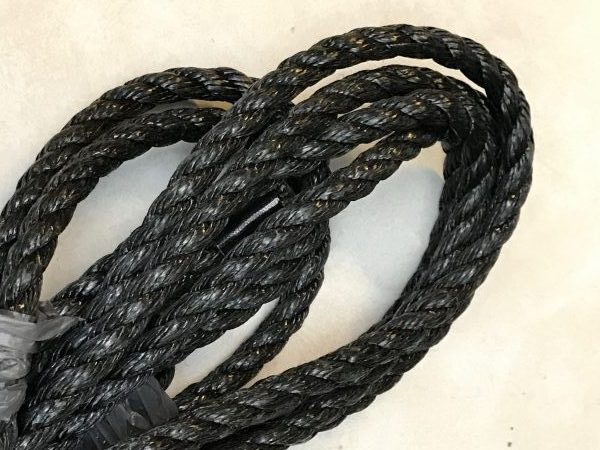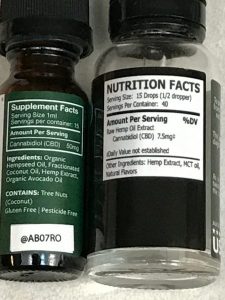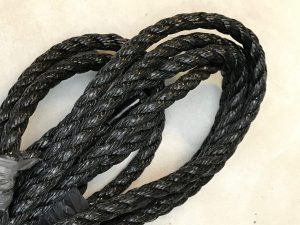
The hemp industry is experiencing a resurgence after being shunned for over forty years. The growing popularity of CBD and the new hemp tinctures that are being produced, coupled with an increased desire for natural products, is driving this growth.
Currently, the world’s biggest producer of hemp is China. According to the National Bureau of Statistics, they produce approximately half of the world’s legal supply (44,000 tons annually). France, Chile, South Korea, and the Netherlands are also top producers of this versatile plant.

Ancient painting (recreated shape imitation) showing the Cannabis Sativa plant(hemp).
A Mongolian drawing depicting this general shape has been found in many locations throughout what is modern-day northern Mongolia and southern Siberia.
History of Cannabis
Cannabis, an annual, unisexual erect herb, belongs to the cannabaceae family of flowering plants. It’s one of the first domestically cultivated plants. Records of its first use date back to China’s Neolithic (New Stone Age) period which began about 12,000 years ago.
Cannabis sativa, Cannabis indica, and Cannabis ruderalis are the three primary species of the cannabis plant. Cannabis sativa is the most popular and commonly grown variety, and hemp and marijuana are variations of it.
What is Hemp
Hemp is a cannabis sativa varietal that contains 0.3% or less tetrahydrocannabinol (THC) content (by dry weight) and cannabidiol (CBD). THC is a phytochemical, one of at least 113 cannabinoids found in cannabis. It’s the main psychoactive compound of cannabis that induces psychotropic or euphoric effects.
Marijuana and hemp are often mistaken for each other as the plants look and smell the same. Pot, however, can contain up to 30% THC content. The two plants are also not used for the same purposes, so they are cultivated and harvested differently.
How Hemp Is Cultivated
Industrial hemp is grown to produce either oilseed or fiber. Sometimes hemp is cultivated to produce both oil and fiber. This is not a common practice as the final crop yield is low and thus less profitable.
Unlike marijuana that’s grown indoors, hemp is grown outdoors to boost seed and stalk yields and size. If hemp oil is the final product, plants are planted at roughly 40 to 60 plants per four square feet to minimize competition between plants. Plant destined for fiber are planted at a rate of about 100 to 120 plants per four square feet to produce optimal crop density and suppress weed competition.
Parts of the Hemp Plant
The versatility that hemp is known for comes from the fact that you can use all parts of the plant for various purposes.
● Seeds – Hemp seeds contain many essential nutrients, including essential fatty acids, protein, amino acids, and dietary fiber.
● Stalk – The stalk of the hemp plant consists of bast fiber and the shiv.
• Bast fiber is the long, string-like band running the length of the stalk. It’s nestled inside the hollow tube. When harvested and processed, this substance is stronger than steel.
• The shiv, also known as the hurd, woody core or pulp, is the inner portion of the hemp stalk separate from the fiber. This substance is highly absorbent and rich in cellulose.
● Leaves – Hemp leaves contain cannabinoids (although less than the buds) and can be used to infuse certain food items like butter or tea. The leaves can also be used for composting and animal bedding.
● Roots – Hemp roots contain triterpenoids, friedelin, and epifriedelanol among other active compounds. These substances have medicinal properties.
Uses of Hemp
The versatility of the world’s oldest cultivated plant lends itself to multiple applications, including the ones listed below.
Paper
Paper is one of the original uses of hemp. The chemical composition of the plant’s bast fiber and hurd are similar to that of wood. Hemp, however, is more eco-friendly and sustainable than wood. With an acre of hemp, you can produce as much paper as 4-10 acres of trees over a 20-year cycle. Paper made from hemp is, softer, and thicker. It is also more durable and is not prone to yellowing, cracking, or deterioration like tree paper.

Food and Supplements
Hemp seeds are the main part of the plant used for human food. The seeds offer fantastic nutritional benefits as they are rich in healthy fats and essential fatty acids as well as vitamin E and minerals like magnesium, potassium, sodium, calcium, sulfur, phosphorus, iron, and zinc.
Hemp seeds are also a great plant-based protein source and can be consumed as food or as dietary supplements. Food options made with hemp seeds include:
● A low smoke point vegetable oil that’s good for finishing/dressing or low-heat cooking purposes.
● A gluten-free flour protein powder.
● Hemp hearts which are shelled hemp seeds may be eaten raw or added to salads or smoothies.
● Dairy-free milk made by blending hemp seeds with water. This type of milk has fewer calories, less protein, and carbs than cow’s milk.

Tincture bottles of CBD oil like the ones here are becoming very popular. People use the dropper to place a few drops of the cannabis preparation under their tongue in order to absorb it sublingually.
Cannabidiol (CBD) Oil
Medicinal-grade CBD oil is made from industrial hemp. CBD oil relieves pain and could reduce anxiety and depression. The active ingredients in CBD may also reduce acne, alleviate cancer-related symptoms and benefit heart health.
For more details specifically on CBD products visit out our home page at https://www.cbdoilaustralian.com/.
Construction Materials
A mixture of hemp hurds and a lime-based binder produces a rigid material called hempcrete. Hempcrete is fireproof and waterproof and resistant to insects, rats, and earthquakes. Homes made using hempcrete are less prone to bad weather-related damage and require less maintenance.
Insulation
Hemp bast fiber is used to make hemp wool. This wool can be used for insulation blankets (batts) or insulation boards for sloped roofs, wooden floors, ceilings, walls, and facades. As an ecological insulation material, hemp is environmentally friendly and can resist heat flow and absorb moisture. This reduces humidity and condensation of the surrounding air and inhibits the growth of mold. These properties make hemp better for insulation than materials like cotton or wool.
Staining and finishing wood
Hemp seed oil can be used to stain and finish wood. When used in this way it’s an excellent alternative to synthetic and petroleum-based polymer coatings because it provides greater weather resistance and contains low levels of toxic VOCs (volatile organic compounds),
Automotive
The automotive industry uses hemp fibers as reinforcement in molded composites that make various car parts. Hemp fibers are a low-cost and low-weight alternative to fiberglass, and it’s able to resist dents.
Beauty products
Cannabinoids found in hemp seed have anti-aging, antioxidant, anti-inflammatory, and moisturizing properties that are great for the skin and hair. Hemps seed oil can be found in a variety of beauty products including lotions, creams, moisturizers, soaps, cleansers, toners, serums.

Hemp rope has obviously been around for a very long time. Cannabis stalk fibers make great rope that is sturdy, although not soft.
Textiles and Fabrics
Hemp fiber is stronger and more durable than cotton. It also gets softer without wearing out the more it’s washed and worn and is hypo-allergenic and non-irritating to the skin. Hemp also absorbs and releases perspiration quickly and breathes well, takes dye easily, retains color well, and resists mold and mildew. Ralph Lauren, Armani, and Calvin Klein are some of the celebrity clothing labels that use hemp to create their clothes.
The flexibility, strength, and water-resistance nature of hemp fibers also makes it great for shoes, bags, ropes, riggings, nets, canvas, sailcloth, and sacks.
Fuel
Hemp can provide two types of fuel – biodiesel and ethanol/methanol. Hemp biodiesel is made from the oil of the (pressed) hemp seed. Ethanol or methanol based hemp is made from fermenting the plant’s stalk. Hemp is an attractive alternative to petroleum and fossil fuels because it’s a renewable resource that grows consistently and quickly. One acre of hemp can produce about 1,000 gallons of fuel.

Powdered hemp oil infused bacon extract for adding to pet food(geared towards dogs).
Pet Food and Bedding
The ingredients in hemp seed oil that make it great for people are also beneficial to pets. Hemp seed oil can help manage arthritis pain and inflammation. The oil can also reduce skin allergies giving pets suppler skin and a smoother coat. It can also boost pet energy levels and help with weight management.Hemp oil also contains vitamin E and vitamin A, which are antioxidants known to help the eyes, heart, cognitive function, and immune system.
Hemp seeds can be used as caged-bird feed. Guinea pigs, rats, and other rodents can use the leaves of the hemp plant as bedding. Hemp stalks can be used for biodegradable and compostable cat litter.
Mulch and Compost
Hemp mulch and compost are made from hemp stalks and work better than other types of organic protective covering. Hemp destroys weeds and is naturally resistant to most insects, eliminating the need for herbicides or insecticides. As hemp degrades, it adds humus to the soil which boosts moisture and nutrient retention. Lignin and pectin found in hemp protects plants against wind damage.
Plastics
The cellulose found in hemp can make different types of bioplastic and biodegradable plastic, reducing the need for petrochemical plastics (oil-based plastics).
Conclusion
Hemp is a variety of cannabis sativa, a plant in the cannabaceae family. The plant has less than 0.3% or less tetrahydrocannabinol (THC) content (by dry weight) making it distinctly different from marijuana that can contain up to 30% of THC.
Use of industrial hemp is on the rise due to the plant’s versatility that lends itself to various uses including paper, textiles, biodegradable plastics, construction, food, and fuel, among others.









